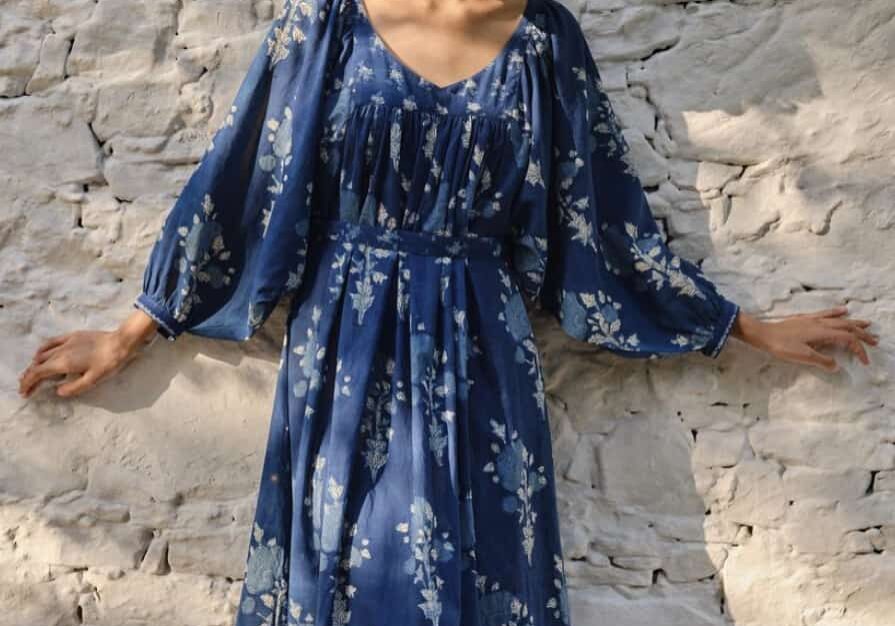Anokhi, a word meaning “unique” in Sanskrit, is not just a brand; it’s an embodiment of India’s rich textile heritage and a testament to the enduring beauty of hand-block printing. From its origins in the royal courts of Jaipur to its global recognition today, Anokhi’s story is a tale of craftsmanship, tradition, and the enduring appeal of handmade artistry.
In the 17th century, Jaipur, the fabled Pink City of India, emerged as a hub of textile artistry. Under the patronage of the Rajput royalty, the art of hand block printing flourished, its vibrant colors and intricate designs gracing the wardrobes of the elite. However in the 19th century, the popularity of this art form began to decline, due in part to the rise of mass-produced textiles, which were cheaper and more readily available.
However, a chance encounter between John and Faith Singh, a British couple captivated by India’s textile heritage, set the stage for block printings revival. In 1970, the Singhs established Anokhi to not just revive this dying art but to transform it into a symbol of modern Indian design. They worked closely with local artisans, preserving traditional techniques while infusing Anokhi with a contemporary sensibility.
Anokhi’s vibrant designs and commitment to craftsmanship resonated with the world. From its humble beginnings in Jaipur, Anokhi expanded its reach, showcasing its exquisite textiles in fashion shows and exhibitions across the globe.
Anokhi became a favorite among international designers and fashion enthusiasts, gracing the pages of Vogue and other renowned fashion magazines. Its popularity soared, with Anokhi stores opening in major cities worldwide.
Anokhi Today: A Legacy of Craft and Sustainability
Today, Anokhi stands as a testament to the enduring power of hand-block printing and the beauty of traditional craftsmanship. Its textiles continue to adorn fashion runways and homes worldwide, each piece a unique masterpiece carrying the legacy of centuries-old techniques.
Anokhi’s commitment to sustainability is as strong as its dedication to craftsmanship. The brand uses natural dyes and eco-friendly processes, ensuring minimal environmental impact. Anokhi also supports local artisans, providing them with a livelihood and preserving their traditional skills.
In a world of mass production, Anokhi stands out as a beacon of authenticity and artistry. Its textiles are not just pieces of clothing or home décor; they are stories woven with threads of tradition, craftsmanship, and sustainability. Anokhi is a living testament to the enduring power of handmade artistry, a legacy passed down through generations, continuing to captivate the world with its vibrant colors and intricate designs
The Process of Making Anokhi
The process of making anokhi is labor-intensive and time-consuming. The first step is to create a design for the fabric. This is typically done by hand, using a traditional tool called a kalaam.
Once the design is complete, it is then transferred to a block of wood. The block is then carved out, creating a raised pattern.
The fabric is then dyed and dried. Once it is dry, the fabric is placed on a table and the block is placed on top of it. The block is then struck with a mallet, which forces the dye into the fabric.
The process of printing the fabric is repeated until the entire design is complete. The fabric is then washed and dried.
Recently, it has become difficult for us here in Australia to procure Anokhi garments & homewares. However, together with Sarah Bartram of Textile Treasures Australia we have managed to gain access to a reliable supply. We have just re-stocked our tablecloths in all sizes and we have a limited number of single and queen sizes quilts available. Some of our homewares are available to view online here. We also have lots of Anokhi clothing due for arrival over the next few weeks. Due to the limited quantities, these will not be shown online but we are always happy to send photographs for interested customers. Just message us here
Don’t forget to follow us on instagram or subscribe to our newsletter to stay up to date
